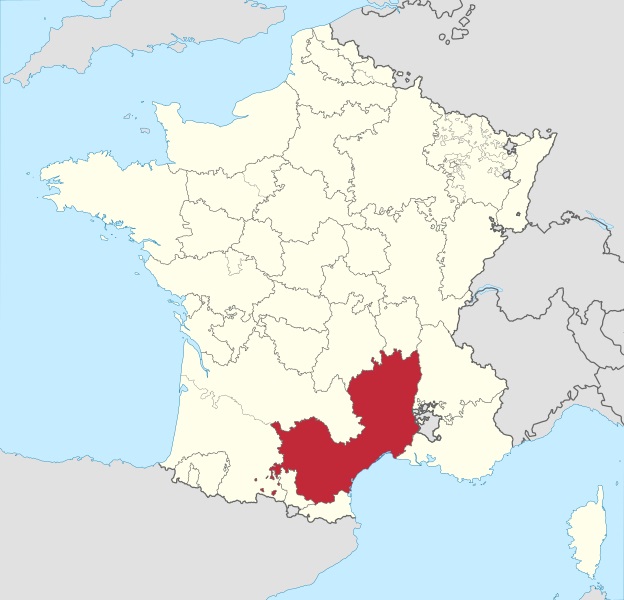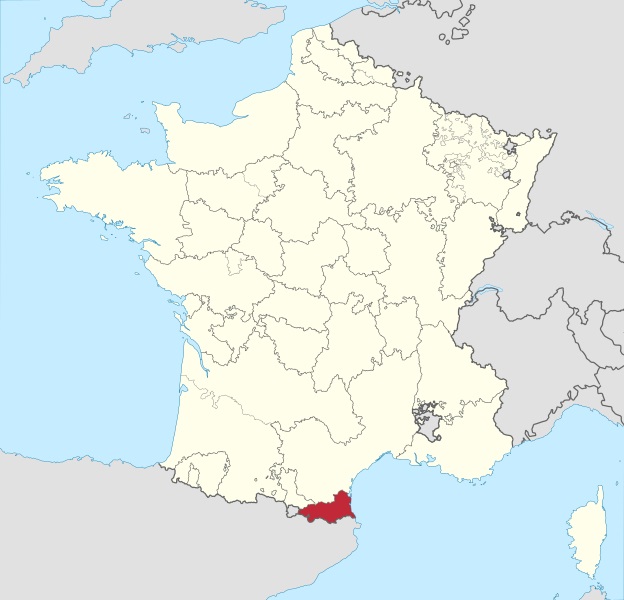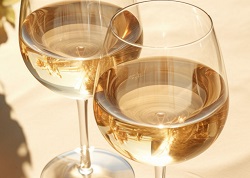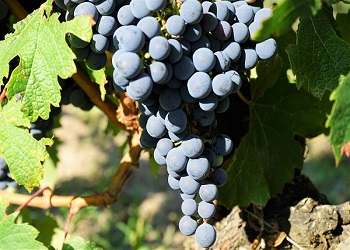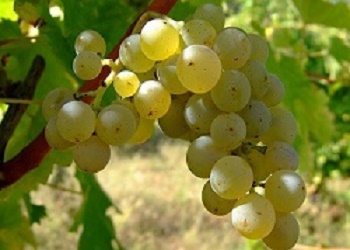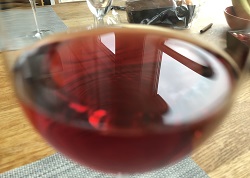Languedoc-Roussillon
Languedoc and Roussillon are two adjacent wine regions in southern France, known for their diverse wine production. While they are distinct regions, they are often named together due to their geographical proximity and similar climate.
Together, they form a vast winemaking region that stretches from the Mediterranean coast to the foothills of the Pyrenees. The regions produce a wide variety of wines, including robust reds, fresh whites, and vibrant rosés, as well as some excellent sparkling and sweet wines.
Vineyards in Languedoc are generally planted along the coastal plains of the Mediterranean while vineyards in Roussillon are to be found in the narrow valleys around the Pyrenees.
The Largest Wine Region i Europe
Languedoc-Roussillon is the larges wine producting region in Europe. In total, more than 14 million hectoliters were produced in 2019, which accounted for nearly 40% of the total wine production in France.
Both Languedoc and Roussillon have experienced a renaissance in the wine production industry. Historically, the regions were known for producing large quantities of table wine, but there has been a shift towards quality wines.
Winemakers are now focusing on expressing the terroir of the region and experimenting with different grape varieties and winemaking techniques.
Key Characteristics
Diversity
Languedoc-Roussillon offers an impressive variety of wines, from robust reds and crisp whites to delightful rosés, sparkling and sweet wines.Mediterranean Influence
The warm, sunny climate leads to ripe, full-flavored wines, particularly reds, that are often high in alcohol but balanced by fresh acidity or mineral notes.Affordability
Despite the high quality, Languedoc-Roussillon wines are often more affordable than wines from more famous French regions like Bordeaux or Burgundy, making them great value for money.
Languedoc
The Languedoc wine region is the largest and most diverse wine regions in France.
Stretching along the Mediterranean coast from the Rhône River to the Spanish border, Languedoc boasts a rich history of winemaking, dating back thousands of years. Over the past few decades, it has transformed from being known for bulk wine production to crafting high-quality wines, particularly red blends.
Climate and Soil
The climate is Mediterranean, with hot summers and mild winters, with some areas experiencing an influence from the Pyrenees. The diverse climate allows for the production of a wide range of wine styles.
The region is blessed with sunlight 320 days of the year, with an average daily temperature of 15 Celsius.
The soils are varied (limestone, clay, schist, and gravel).
Grapes
Languedoc is renowned for its production of red wines, with Grenache, Syrah, Mourvèdre, Carignan and Cinsault as the primary grapes. These grapes thrive in the region's warm climate, producing rich, flavorful wines with ripe fruit characteristics, spicy notes, and firm tannins.
While less prominent than red wines, Languedoc also produces white wines made from grapes such as Picpoul, Rolle (Vermentino), Grenache Blanc, Marsanne, Roussanne, and Viognier. These white wines are often crisp, aromatic, and refreshing, with citrus and floral aromas.
Grenache, Syrah, Mourvèdre (GSM)
The GSM grapes form the backbone of most Languedoc red blends. The wines are typically full-bodied with ripe, dark fruit flavors (plum, blackberry, black cherry), complemented by spicy, herbal, and sometimes earthy or smoky notes.
Syrah brings structure and spice, Grenache adds roundness and fruit, while Mourvèdre contributes tannins and complexity.
Carignan
Carignan is often used as a blending grape but is also produced as a single-varietal wine. Carignan is known for its dark fruit, spice, and savory characteristics. It produces wines with firm tannins and rustic flavors, especially from old vines.
Cinsault
Cinsault is usually blended with other grapes. It is light and aromatic, bringing red fruit and floral notes to blends. It is also a common grape for making fresh, fruity rosés.
Corbières and Minervois
These are well-known sub-regions of the Languedoc that produce excellent red wines. Corbières reds are robust and structured, often with a distinctive garrigue (herbal) character, while Minervois wines are a bit more elegant and aromatic, with fruit-forward profiles.
Picpoul de Pinet
This is one of the most famous white wines from Languedoc. Picpoul is a high-acid, citrusy grape, and the wines are crisp, refreshing, and perfect for pairing with seafood. Expect flavors of lemon, lime, green apple, and a saline, mineral finish.
Grenache Blanc, Marsanne, Roussanne
These are typical white grapes used in Languedoc blends. The wines are generally full-bodied with flavors of stone fruits (peach, apricot), citrus, and floral notes. They often have a rich, slightly oily texture but maintain good acidity.
Vermentino
Known as Rolle in France, Vermentino is another popular white grape that produces fresh, aromatic wines with flavors of citrus, pear, and herbs.
Rosé Wines
Languedoc produces vibrant and refreshing rosés, often from Grenache, Cinsault, and Syrah. These wines are typically dry, with red berry (strawberry, raspberry), citrus, and floral notes, making them perfect for summer drinking.
Crémant de Limoux
Languedoc is home to Limoux, which claims to have produced sparkling wine before Champagne. Crémant de Limoux is made using the traditional method (like Champagne) from grapes like Chardonnay, Chenin Blanc, and Mauzac. These sparkling wines are fresh and elegant, with fine bubbles, citrus, apple, and brioche notes.
Appellations
Côteaux du Languedoc AOC
Côteaux du Languedoc is an AOC covering all Languedoc, made up of around 15 sub-districts. Red wines are produced there from Carignan, Cinsault, Grenache, Mourvedre and Syrah grapes of consistent quality.
10 Sub-Regional Appellations:
AOC Cabardès (red, rosé)
AOC Clairette du Languedoc (white)
AOC Corbières (red, white, rosé)
AOC Limoux (still wines; red, white)
AOC Malepère (red, rosé)
AOC Minervois (red, white, rosé)
AOC Picpoul de Pinet (white)
AOC Pic Saint-Loup (red, rosé)
AOC Saint-Chinian (red, white, rosé)
AOC Terrasses du Larzac (red)
5 Commune or Village Appellations:
AOC Corbières Boutenac (red)
AOC Faugères (red, white, rosé)
AOC Fitou (red)
AOC La Clape (red, white)
AOC Minervois la Livinière (red)
Sweet Wine
There are also four sweet wine appellations in Languedoc which produce Vins Doux Naturels from Muscat grapes:
AOC Muscat de Frontignan (white)
AOC Muscat de Lunel (white)
AOC Muscat de Mireval (white)
AOC Muscat de Saint-Jean-de-Minervois (white)
Sparkling Wine
3 Sparkling Wine Appellations:
AOC Blanquette de Limoux (white)
AOC Crémant de Limoux (white, rosé)
AOC Blanquette de Limoux Méthode Ancestrale
Soil
Limestone |
Climate
Coastal plains |
Black Grapes
|
White Grapes
Ugni Blanc |
Red Wines
|
White Wines
Piquepoul Blanc Sparkling Wines: |
Alcohol can be addictive. Always drink in moderation.
© Copyright 2015-2025 W3 Wine School. All Rights Reserved.
